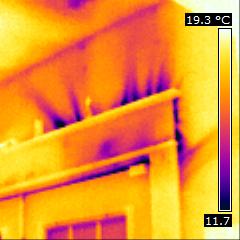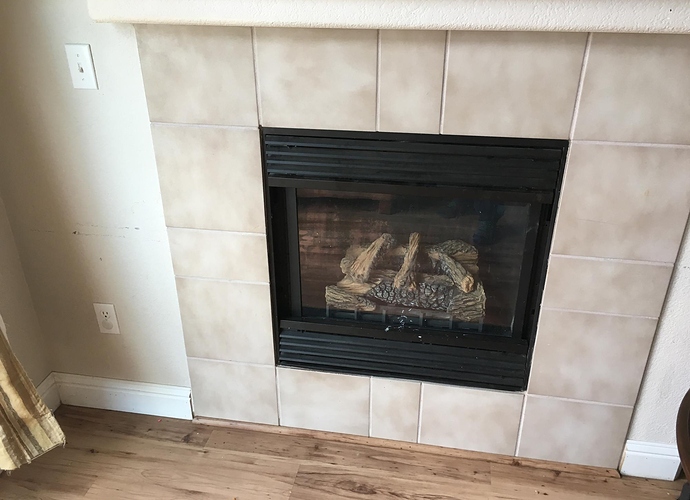The goal of this course is to teach home inspectors about infrared thermography and its applications for inspecting residential properties.
On my check list…just have not had time yet.
Infrared Thermography Inspection Training
This thermal was taken in a house when the exterior temperature was roughly -5 deg C and the interior temperature was close to 20 deg C. The home owner had complained that every since the installation of their new garden door, that room in the house always seemed cold. The image I took shows significant air infiltration coming from around the interior trim. This suggests that the installer did not properly air seal the rough opening space around the door frame.

Infrared Thermography Inspection Training
Article: Thermal Inspection Reports
This article very clearly outlined the details of a high quality IR report. I think what might be the most important component of the article is one that could often be overlooked. And that is the DON’Ts when preparing IR reports. The three bullet points listed are the most common that I’ve seen and I believe training courses should cover them (at least the first 2) in more detail. This might help offset the urge that some newly trained thermographers have to ‘show off’ their new skills and equipment.
This picture is of an exterior door. Door was recently replaced and now the sub-floor was soft and spongy. The owner was a close friend, and asked if I would come and take a look it. The door had no signs of caulking around the door and siding. Area of irregular shape was noticed in the Thermal Camera at the threshold. Area was tested with a moisture meter and the area was verified to have moisture present at the time of inspection. Water was appearantly leaking under the threshold of the door. Rain was present 24 hours prior to the test.
Inspection and Writing Assignment
The 2 images are of a gas insert fireplace. As seen in the darker color of the infrared image, cold air is entering the interior of the home around the fire place, as well as the outlet to the left of the fireplace. Energy loss.
Nice photo, Jason! What camera are you using?
Reading and Writing Assignment
IR Cameras: An Overview for Inspectors
Infrared cameras are becoming an essential part of today’s growing industry. They are effective and quick in scanning large areas for potential defects. Although knowing how to use an IR camera is important, knowing what you are actually looking at and how you report on said items is really what matters.
IR Cameras: Inspecting for Air Leaks
IR cameras are a great tool for energy audits. They can show lack of insulation and air leakage under optimum conditions. It is important to have proper temperature difference between interior and exterior so that anomalies can be seen more easily. By putting the building envelope under negative pressure and drawing in more outside air than usual, potential air gaps should be more noticeable.
Matthew Sprague
I took an IR picture of some previous water damage that my ceiling received this winter after a large snow storm. I live the the Denver metro area and we have been getting lots of rain this spring but this spot does not seem to be affected by the rain. As you can see in the picture there does not seem to be any moisture in this area, I did put my moister meter on it to confirm and it was dry. We do not have any mechanical systems in our attic. For the time being I am just going to have to caulk it up as fluke wind that blew the snow up into the attic.



